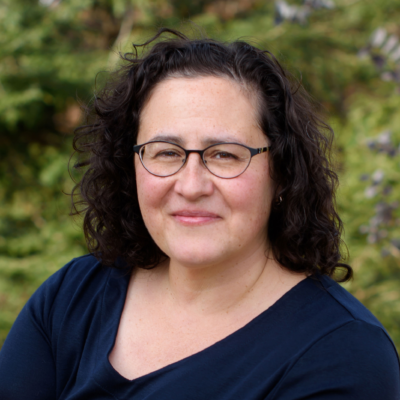Grantmakers’ Questions as a Way Toward Change

Knowledge work in philanthropy is a big umbrella, expanding exponentially over the last decade to cover more of what grants professionals do on a regular basis. Many in philanthropy now have titles or job descriptions that include creative words like knowledge insights, grants and learning, information systems, data discovery, or relational analysis.
Philanthropy and knowledge work have a long history, from demonstration projects to evaluation to the encouragement of learning communities and grantee learning networks. The connection is becoming even more important as the sector seeks to address social divisions, contemporary challenges of democracy, socio-economic issues and various entrenched inequities.
The essence of knowledge work—shared meaning making—is how we come together to understand the world we are living in and co-create our society. Embracing the notion of shared meaning making enables us to name the specific ways that knowledge work supports both effectiveness of grantmaking AND social change at the same time.
Knowledge processes always start with some explicit or underlying questions. Being targeted about the questions we ask on applications and throughout our grantee relationships helps to frame understandings, document learning, and identify challenges or barriers. Questions are instrumental to successful grantmaking that focuses on change.
Questions as a superpower
If I had to name one superpower for knowledge work, it would be asking questions. As an emerging field, we embody the spirit of the toddler—always curious and wanting to know more. Sure, grants professionals can be masterful with technology, great at planning out a timeline, and really good at ensuring administrative alignment across siloes. We are often also asked to organize concepts (and tons of data) and suggest clarity in what feels like chaos.
That acknowledgement made, our power to encourage change—to help organizational systems run more smoothly, to prompt positive movement, to enhance capacity, and to energize broader networks—actually centers on questions. The power at our core is all about asking the right questions, at the right time, and in ways that can prompt the most beneficial shifts in beliefs and practice.
Harnessing questions for good
Sometimes there is a direct line from a question to a compliance requirement or a tracking need, such as “How was your budget allocated?” or “What is the geographic location served?”
However, grant questions that we include on applications, reporting requirements, and on-site visits are often about more than simple tracking or any specific legal requirements. Likewise, questions that we use internally to foster learning and collaboration with colleagues and across departments are often about more than gathering specific data points. The questions we ask inside or outside our organizations have the potential to bring people together in shared meaning making to envision and enact change.
Avoiding Excess
Asking too many questions and collecting too much data without ever using it is a problem in grantmaking. As the sector seeks to minimize the burden on staff and grantees, the challenge for those in knowledge work is to be more conscious and reflective in designing grant questions that will most energize and strengthen the paths toward positive change.
Many grants professionals have become skilled in identifying the types of questions to use—open or closed, multiple choice, Likert scale, etc. Recently, there has been an emphasis on designing questions to build on trusting relationships. In this respect, it’s crucial to be transparent about how our questions will be used. However, in order to avoid excess and also to choose the right type of questions, to be transparent about use, and to build trust, we must first identify the nature of our questions.
Mapping the Nature of Our Questions
Mapping the nature of a question can help us to design or select questions that most directly connect to desired change. The nature of a question is often nuanced, multi-dimensional, and attached to our intentions. I suggest three prompts for mapping out the nature of a question.
- What is the history in the question?
- What is the agenda of the question?
- What future does the question help us to create?
What is the history in the question?
There is history in every question. Figuring out the history involves stating first what we are trying to understand, such as the issue, topic, occurrence, trend.
For years, I worked within the area of housing. Sometimes, I was involved in documenting housing mortgage lending discrimination. Sometimes, the task was to identify predatory lending. More recently, I am involved in efforts to increase Black homeownership. In the housing arena, we often analyze demographic information, asking “what percentage of housing stock is single homeowner occupied and how much is multi-family rental occupied?”
While this seems like a “natural” question, it actually goes beyond a desire to track housing unit type. This is where history comes in.
This question was set within a United States value context affirmed after WWII and with the GI bill whereby homeownership was solidified into an ideal of the American dream. Homeownership served as proxy for class status and for commitment to country. Even today, the level of homeownership in a community is reified as the standard of neighborhood stability. Homeownership, in many social science studies, has become synonymous with stability, safety, quality schools, and socio-economic desirability.
We can notice shifts in these ideals and can, of course, challenge them. But every question has a history to be understood even as we are asking it.
What is the agenda of the question?
The word “agenda” often has a negative connotation as something that is hidden, but here it means that every question has a reason it is being asked.
In education circles, we often ask, “How many students, in a particular school or city, have demonstrated a level of proficiency in a subject area?” Folks in the education world often believe that learning is inherently good, and that schooling is about learning and can be a way out of generational poverty and toward class mobility.
Although, on the surface, we may be asking about student test scores and tracking changes in scores over time, what we may really be wanting is to compare across socio-economic groups. We may collect data on test scores because we intend to evaluate or indicate the level of success of a specific intervention or program. We may be asking about test scores to actually illuminate inequities in quality of instruction or resource availability across gender, racial, and socio-economic groupings.
A question that seems straight forward on the surface may encompass multiple possible reasons. The intended reasons can be noted and shared. What may not be fully anticipated is what the question might reveal or enliven because of how it is asked.
What future does the question help us to create?
The questions we ask, and how we ask them, can open possibilities. While working with a women and girls fund of a county-wide community foundation, I co-designed and conducted a landscape scan. The scan was initially framed as a gap analysis, a process of asking, “What needs exist and what services are available in the region?”
We started the data gathering process with focus groups involving the fund’s existing grantees. We then expanded to include organizations and community groups not yet receiving grants. Over the course of the project, we relied on the focus group participants to help us shift and broaden the language we used in the questions.
First, we asked, “What services are available for women and girls?” Then we asked, “What programs and activities are there for women and girls?” We then adopted questions about the “services/supports/ development opportunities.” Finally, we embraced, “What gender-specific supports for women and girls are provided?”
As we shifted the language in our questions, our understanding also shifted from services that fit neatly into the foundation’s pre-existing categories to the many ways that women and girls are nurtured in community and across life stages.
The future in our original question was one of re-affirming existing categories. The opportunity in our later questions was one of re-envisioning. The focus group questions and conversations also started to become spaces of opportunity for organizations to see themselves and each other, not in competition for the best single type of offering, but as potential collaborators in addressing various barriers and challenges faced by women and girls.
Questions, Risk, and Change
For changemakers, the power of questions is often attached to a notion of checks and balances, critique or challenging authority. For grants professionals, questions also have a simple practicality as they are the foundation of knowledge work.
Whether you see it as a superpower, a responsibility, a tool, or a practicality, questions are core to moving toward change. Becoming skilled in using questions requires a more nuanced way to understand their nature.
To learn more about knowledge building and its impact on equity in grantmaking, check out the webinar, Alchemy in Action: The Dance of Knowledge Building, Grant Strategy, and Equity.
